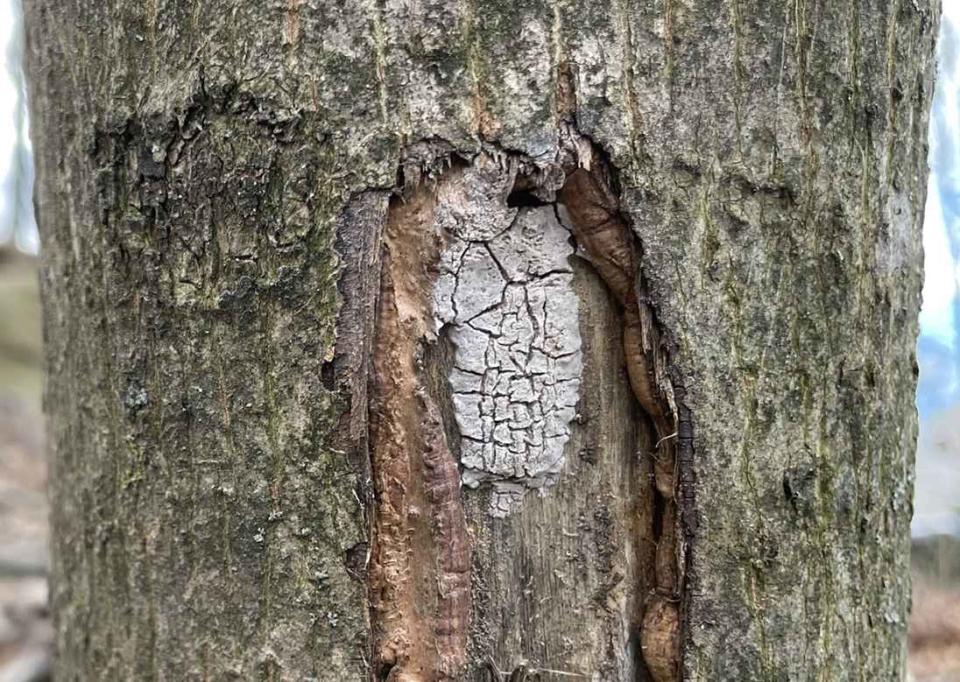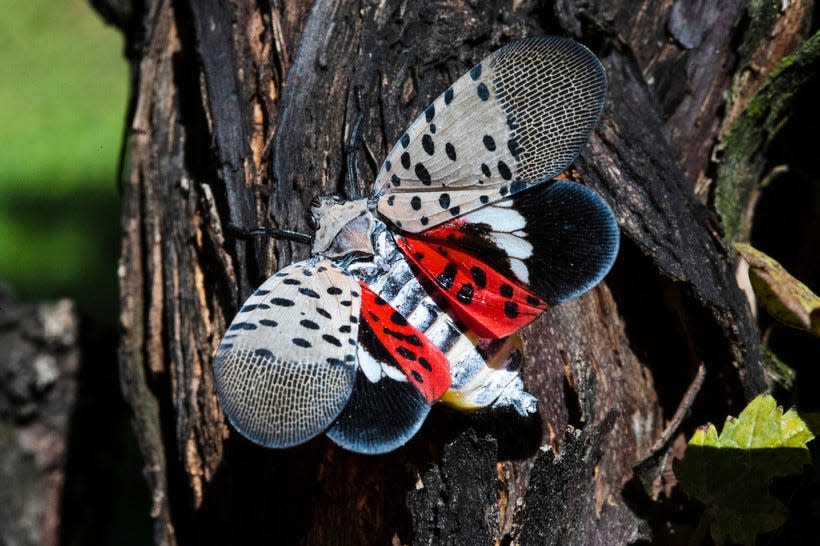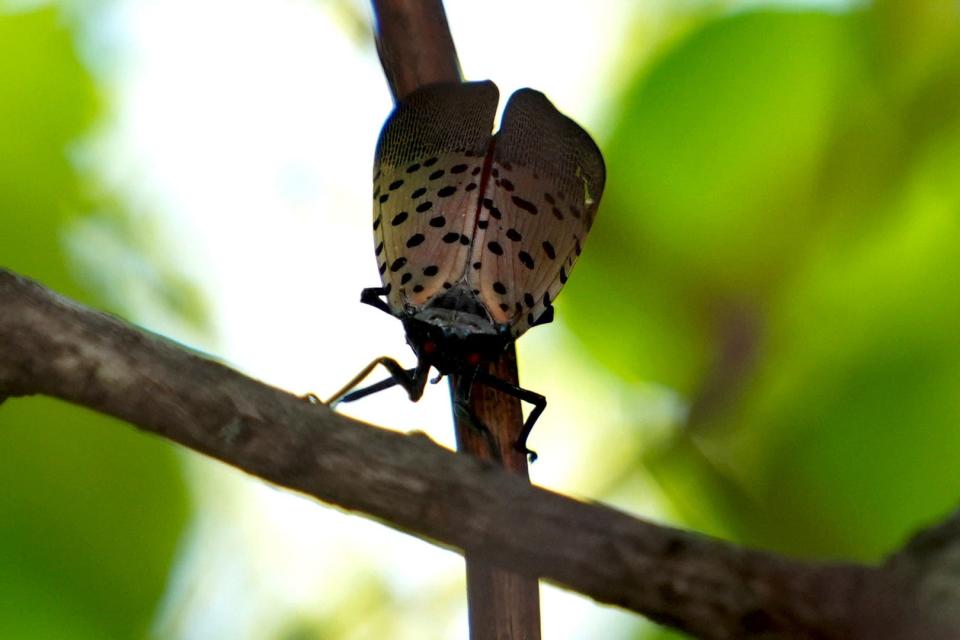Spotted lanternfly: Worcester infestation is largest in state as hunt for eggs continues
WORCESTER — The city has the largest infestation of the spotted lanternfly in Massachusetts, according to the state Department of Agricultural Resources. It's a concern because the insect can devastate agricultural crops.
Worcester’s infestation is roughly eight-tenths-of-a-square-mile, running between Routes 9 and 20, along the eastern and western sides of Lake Quinsigamond, said Jennifer Forman Orth, a Department of Agricultural Resources environmental biologist.
More:Spotted lanternfly latest invasive species sighted in Worcester
State surveys completed over the summer and fall when adult lanternflies are active determined that Worcester had the largest infestation in Massachusetts. Spotted lanternflies were first observed in Worcester in September, southwest of Lake Quinsigamond.
This winter, state crews removed and destroyed a combined total of 5,500 egg masses in Worcester, Shrewsbury, Fitchburg and Springfield. Most of the 5,500 were found in Springfield, while the largest number of adult lanternflies were in Worcester.
As for how the insects got to Worcester, Forman Orth said it's hard to pinpoint because of the city's large network of highways and railways that egg masses can latch onto.
See one, report it
As part of National Invasive Species Awareness Week, which kicked off Feb. 20, the state urges anyone that spots an egg mass to report it. Take a photo and send it to massnrc.org/pests/slf or email slf@mass.gov.
Egg masses are beige or gray in color, rectangular and about 1 ½ inches long.

The spotted lanternfly is originally from Asia and was first found in the United States in 2014 in Pennsylvania. Young lanternflies don’t have wings and are red, with black-and-white markings. Adults are roughly an inch long, a gray color, with black spots and red underwings.
Why Worcester?
Forman Orth said the insect loves to plop down on something that Worcester has a lot of – the invasive tree of heaven.
There are plenty of them growing along the city’s railroad tracks. That presents a problem because the insect can move from the trees, latch onto a train car and be transported to other areas of the state where it can do its damage.

Cutting down trees won’t get rid of the insect, like the 30,000 trees removed in and around Worcester during the Asian longhorned beetle infestation in 2008.
That’s because the insects can lay egg masses on any flat surface including one of their favorite spots — rusty metal. One egg mass was recently found on a metal plow attachment in the city.
“You find spotted lanternflies virtually everywhere, and doing tree removal doesn’t really make the situation better,” said Forman Orth.
Shrewsbury, Fitchburg infestations
The Shrewsbury infestation was spotted a year before the one in Worcester. Treatments cut their numbers and the focus is to control any potential spread.
Fitchburg is where the first breeding population of spotted lanternflies in Massachusetts was discovered in September 2021. The insects were clustered on two trees of heaven and both were cut down.
“The (Fitchburg) infestation is active but much smaller than infested parts of Shrewsbury, Worcester or Springfield,” said Forman Orth.
Manage, not eradicate
That is the strategy in Worcester and the rest of Massachusetts, said Forman Orth, because other states haven't been able to completely eradicate the insect including neighboring Rhode Island.

Other states where infestations have reportedly occurred include Delaware, Indiana, Maryland, New Jersey, New York, Ohio, Pennsylvania, Virginia and West Virginia.
Some of those states report swarms of adult spotted lanternfly in the late summer and early fall.
“We have to manage, not eradicate. No other state has been able to eradicate them, unfortunately,” said Forman Orth.
Contact Henry Schwan at henry.schwan@telegram.com. Follow him on Twitter @henrytelegram
This article originally appeared on Telegram & Gazette: The spotted lanternfly is managed in Massachusetts, not eradicated

